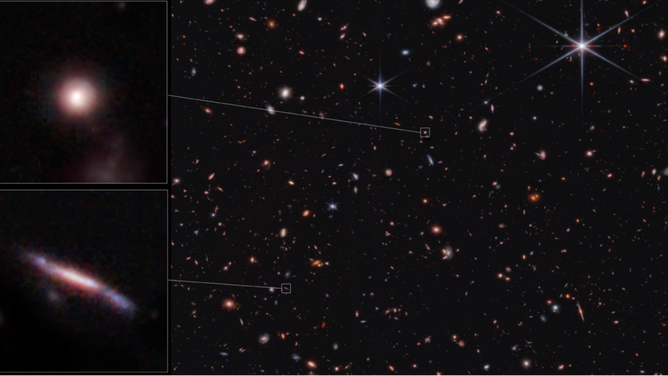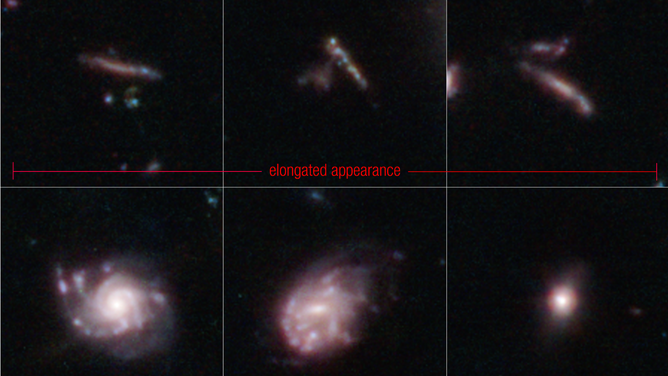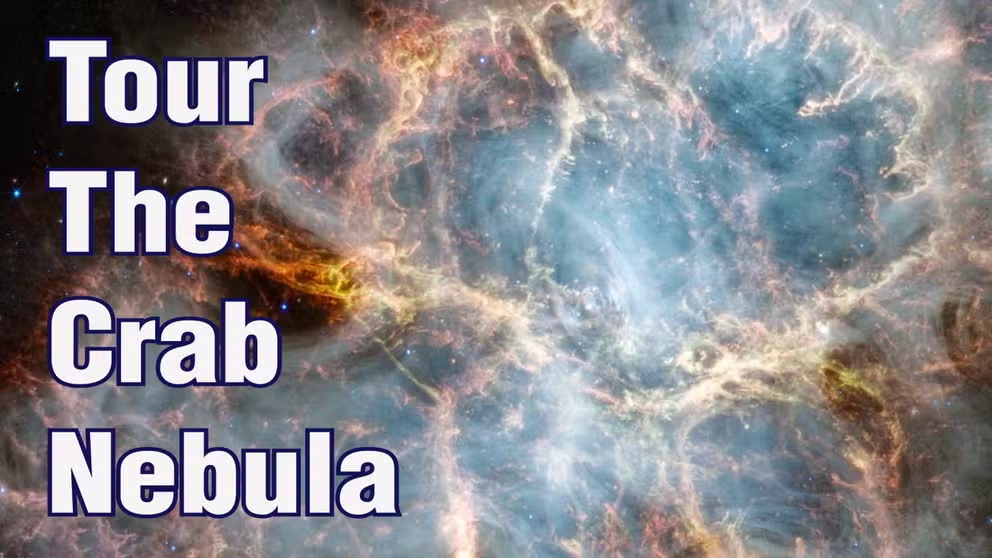Distant galaxies are shaped differently than researchers first thought
The James Webb Space Telescope has been in operation since 2022 and likely will lead to stunning imagery over the next few decades. The Hubble Space Telescope was launched in 1990 and still remains in operation today.
James Webb Space Telescope captures Crab Nebula in new light
NASA's James Webb Space Telescope imaged the supernova remnant, known as the Crab Nebula using its NIRCam and MIRI. This video takes you on a tour of the eerie image.
Researchers combing through data from NASA’s James Webb Space Telescope said they believe galaxies in distant space are flat and elongated versus all being round like volleyballs, as was the presiding theory.
Infrared images from the Cosmic Evolution Early Release Science (CEERS) Survey showed galaxies appearing to resemble surfboards and pool noodles, which could date back to when the universe was 600 million to 6 billion years old.
"Roughly 50 to 80% of the galaxies we studied appear to be flattened in two dimensions," Viraj Pandya, a NASA Hubble Fellow at Columbia University, said in a statement.
The distant galaxies could be precursors to how our own Milk Way started more than 13 billion years ago.

Galaxies appear flat and elongated, not spiral and elliptical structures.
(Space Telescope Science Institute / NASA)
JAMES WEBB SPACE TELESCOPE WON’T BE RENAMED FOLLOWING INVESTIGATION INTO GOVERNMENT DISCRIMINATION
The change in shapes from spirals and ellipticals to more flat and elongated figures is all courtesy of the detailed imagery from Webb.
According to experts, older telescopes did not miss seeing the galaxies, but their outputs weren’t as detailed as the products from the $10 billion JWST.
"Webb confirmed what Hubble has long shown us, but in greater detail in infrared light," Pandya stated. "Their combined observations show that in the early universe, many more galaxies appear flat and elongated. This has profound implications, since we usually assume that galaxies like our own Milky Way started out as disks, but that may not be the case."

Galaxies appear flat and elongated, not spiral and elliptical structures.
(Space Telescope Science Institute / NASA)
ANTARCTICA’S ‘DOOMSDAY GLACIER’ IS MELTING AWAY DIFFERENTLY THAN SCIENTISTS FIRST THOUGHT
The telescope is nearing two years in space and has already beamed back stunning images that far surpass the quality of imagery produced by the Hubble and other older telescopes.
The space agency believes operations of the James Webb Space Telescope have exceeded expectations, and the space observatory could easily exceed its expected 10-year lifespan.
What is the James Webb Space Telescope?
According to NASA, the JWST sees the universe using infrared radiation, a form of light that we feel as heat and is invisible to human eyes.

